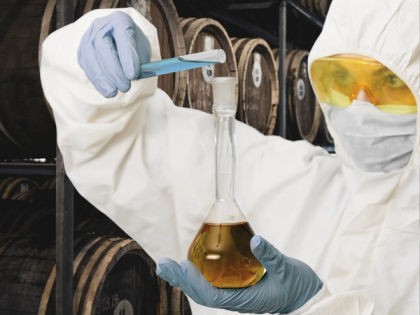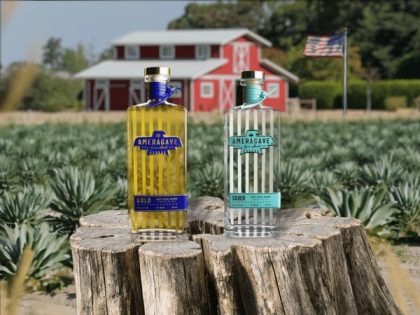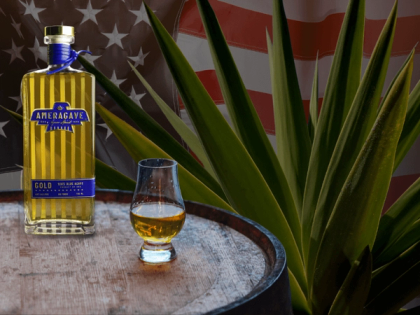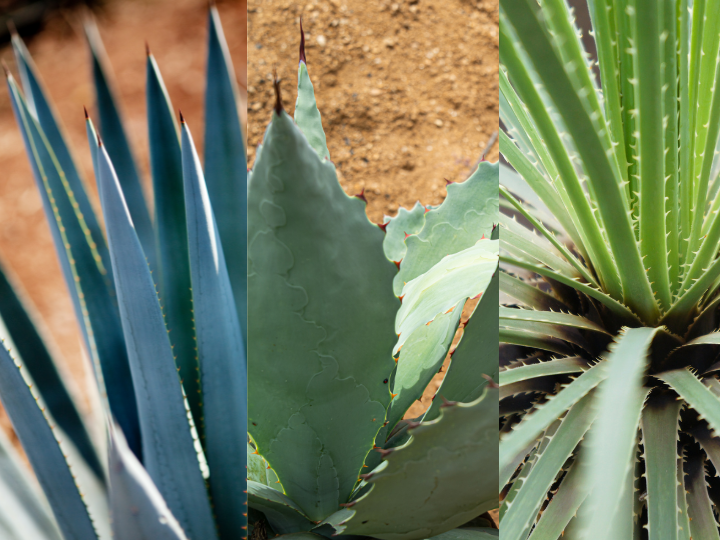
Agave Spirits 101: Understanding Tequila, Mezcal and American Agave Spirits
Uncover the secrets of Agave Spirits! Learn the differences between Tequila, Mezcal, and American Agave Spirits, their unique flavors, and production methods.
Table of Contents
- Key Takeaways
- History and Origin
- Tequila: Birthplace of a Legend
- Mezcal: The Ancestral Spirit
- American Agave Spirits: A New Frontier
- Understanding Agave: The Key Ingredient
- Type of Agave Used in Tequila
- Types of Agave Used in Mezcal
- Types of Agave Used in American Agave Spirits
- The Art of Production
- Making Tequila
- Crafting Mezcal: A Time-Honored Tradition
- Producing American Agave Spirits: Innovation Meets Tradition
- Flavor Profiles: A Comparative Study
- Identifying Tequila's Unique Flavors
- Savoring the Complexity of Mezcal tastes
- Exploring the Range of American Agave Spirits
- The Aging Process
- Aging Tequila
- Aging Mezcal: A Transformative Process
- Aging American Agave Spirits: Creating Character
- Serving and Enjoying
- How to Best Savor Tequila
- Tips for Drinking Mezcal
- Enjoying American Agave Spirits
- Wrapping Up: Tequila, Mezcal or American Agave Spirits?
- The Essence of Each Spirit
- Making the Choice: What's Your Flavor?
Agave spirits have gained popularity in recent years, with many people curious about the different types available. While this includes tequila and mezcal as two well-known agave-based drinks, there is a growing interest in American agave spirits. In this guide, we'll explore the key differences between these three types of agave spirits and help you understand what makes each one unique.
Key Takeaways
- Learn about the history, types of agave plants and production processes used for agave spirits, mezcal and tequila.
- Discover the distillation process and aging process.
- Dive into the different flavors and best tasting practices of each.
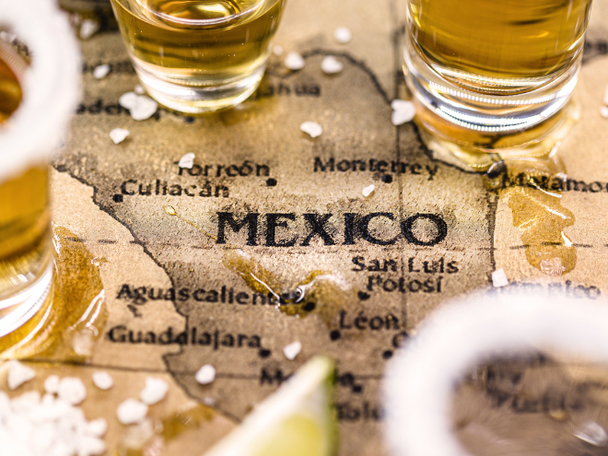
History and Origin
Agave based drinks have a long history, dating back thousands of years to the Aztecs and Mayans in Mexico. These indigenous groups used agave plants for various purposes, including making fermented drinks. The Spanish conquistadors later introduced distillation methods to create stronger spirits made from agave, leading to the birth of tequila and mezcal.
Tequila: Birthplace of a Legend
Tequila is the most well-known agave spirit, originating from the town of Tequila in the state of Jalisco, Mexico. It must be produced from the Blue Weber Agave plant and within five specific states in Mexico to be labeled as Tequila. The production process involves cooking, crushing and fermenting the agave before distillation, resulting in a clear liquid referred to as blanco tequila, silver tequila, or plata tequila. This can then be aged in barrels to create reposado tequila, añejo or extra añejo.
Mezcal: The Ancestral Spirit
Mezcal is often referred to as the "grandfather" of tequila, as it predates its famous counterpart. The term mezcal is regulated to being produced in only nine Mexican states. It can be made from any type of agave plant and is typically produced in smaller batches using traditional methods such as roasting the agave in underground pits before being distilled. This process gives most mezcal a distinct smoky flavor that sets it apart from most tequila made.
American Agave Spirits: A New Frontier
In recent years, there has been a surge in American-made agave spirits. These are not limited to certain regions like tequila vs mezcal, and can be made from different types of agave plants. Some producers use traditional methods inspired by tequila and mezcal production, while others experiment with unique techniques and flavor profiles. These American agave spirits are gaining recognition and popularity among spirits enthusiasts.
Understanding Agave: The Key Ingredient
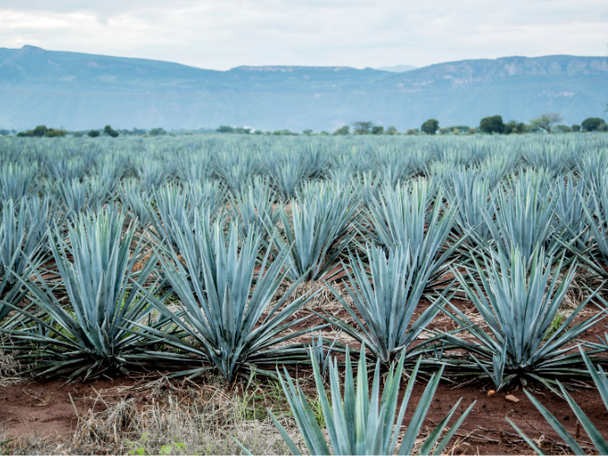
Agave plants have a long history in Mexican culture, with various uses ranging from food to medicine. They are also an essential ingredient in the production of agave spirits. The heart of the agave plant, known as the piña, is harvested and used for fermentation and distillation. There are over 200 species of agave. Depending on the species, the age of the plant, and where it was grown, the piña can have different tastes. The unique flavor profiles of tequila, mezcal, and other agave spirits can be attributed to the specific type of agave used and the production distillation process used.
Type of Agave Used in Tequila
Tequila can only be made from Blue Weber agave (Agave Tequilana), which is primarily grown in the state of Jalisco, Mexico. This blue agave plant takes about 8-12 years to mature before it can be harvested for production. The resulting tequila has a smooth and slightly sweet flavor.
Types of Agave Used in Mezcal
There are over 30 types of agave plants used to make mezcal, with the most common being Espadín. Other popular agave varieties include Tobalá, Tepeztate, and Madrecuixe. Each type of agave has its own unique characteristics and contributes to the complexity of the final product.
Types of Agave Used in American Agave Spirits
Unlike tequila and mezcal, American agave spirits are not limited to specific types of agave. Producers have the freedom to experiment with different varieties, resulting in a wide range of flavor profiles. Some common agave species and plants used include Agavacea, Sotol, and Yucca. Ameragave Gold and Silver are both made from 100% Blue Weber Agave. The Silver variant has a flavor profile you would expect from a premium blanco while the Gold has a deep complex flavor comparable to the best extra añejo tequilas and often appreciated by whiskey drinkers.
The Art of Production

Apart from the type of agave used, the production process also plays a crucial role in determining the flavor of agave spirits. From the cooking method to fermentation and distillation techniques, each step requires careful consideration and skill.
Making Tequila
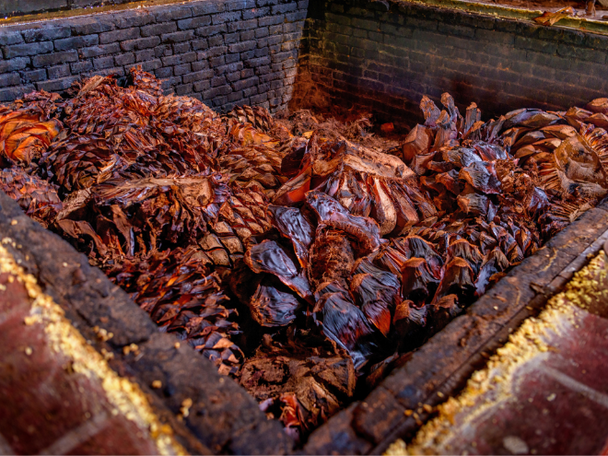
The agave piña is harvested by hand and then cooked in traditional brick ovens or modern autoclaves. The cooked piñas are crushed to extract their juices, which are then fermented and distilled in copper pots. Blanco variants are bottled immediately while resposado and añejo variants are placed in barrels for aging. The entire process can take anywhere from a few weeks to several months, resulting in different types of tequila.
Crafting Mezcal: A Time-Honored Tradition
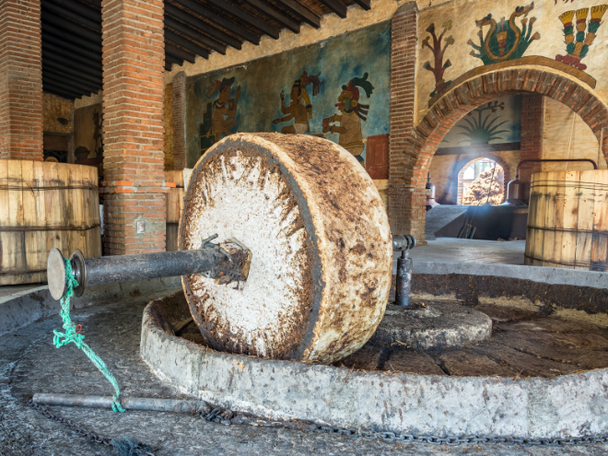
In contrast to tequila, mezcal producers use a variety of cooking methods, including earthen pits lined with lava rocks and covered with banana leaves. This gives mezcal its signature smoky flavor. The agave piñas are then crushed by horse-drawn stone mills and fermented in anything from wooden vats to animal hide before being distilled in clay pots or copper stills.
Producing American Agave Spirits: Innovation Meets Tradition
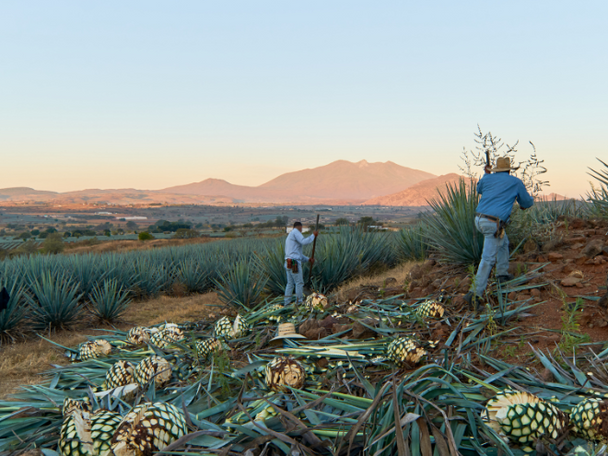
With the freedom to experiment, American agave spirit producers are constantly pushing the boundaries of traditional methods. Some incorporate elements from both tequila and mezcal production, while others use unique cooking and fermentation techniques to create new and exciting flavors. Ameragave believes in the very traditional approach of growing, cooking and crushing the piña of the agave tequilana, and uses modern innovative methods to enhance our flavors naturally.
Flavor Profiles: A Comparative Study
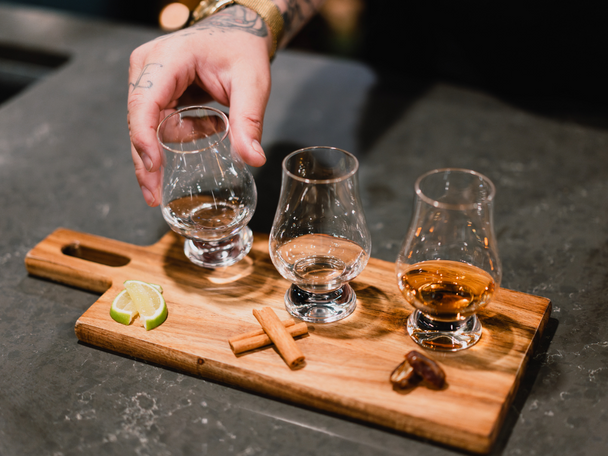
Each type of agave spirit has its own unique flavor profile, influenced by factors such as the type of agave used, production process, and aging. Tequila tends to have a smoother and more refined taste, while mezcal is bolder with a pronounced smokiness. Other agave spirits can vary greatly in flavor, depending on the methods used by each producer.
Identifying Tequila's Unique Flavors
Tequila is known for its distinctive flavors of agave, citrus, and vanilla. Since only blue agave can be used to produce tequila, the differences in flavor profiles vary less than both mezcal and other agave spirits. Tequila that has been aged in oak barrels mutes some of the brighter notes and replaces them with complex, deeper hints of caramel or butterscotch.
Savoring the Complexity of Mezcal tastes
Mezcal's unique smoky flavor comes from the cooking process and can range from subtle to intense. The type of agave used also plays a role in making mezcal itself, with each variety adding its own nuances to the taste. Aficionados might also detect floral, fruity, or earthy notes .
Exploring the Range of American Agave Spirits
With American agave spirits, the possibilities are endless. Producers can use any type of agave they choose and experiment with various cooking and distillation processes and fermentation techniques. Some may incorporate elements from both tequila and mezcal production, while others may add their own twist with unique ingredients or aging processes. Due to the broadness of this category it's a good thing you're reading up on this so you'll know more of what to expect when learning about a bottle's ingredients and process. Ameragave utilizes 100% Blue Weber Agave with no additives. Our ingredients are simply agave, water and yeast. In our Gold spirit we utilize 100% new American oak in our innovative aging process. Learn more about our process.
The Aging Process
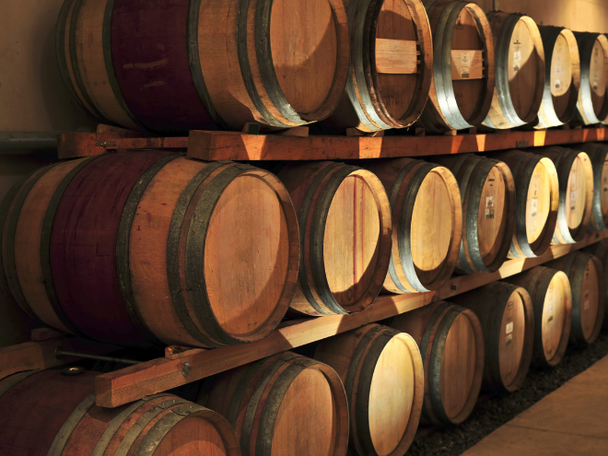
Aging is an essential step in the production of agave spirits, as it allows for the development of complex flavors and aromas. The type of wooden barrels used and duration of aging can greatly impact the final taste.
Aging Tequila
Tequila is typically aged in oak barrels, which can be previously used bourbon or wine barrels. The longer it ages in wooden barrels, the smoother and more complex the taste becomes. Blanco tequila, which is unaged, has a crisp and fresh flavor, while reposado tequila and anejo tequila have a richer and more nuanced profile.
Aging Mezcal: A Transformative Process
Mezcal can also be aged in oak barrels, but traditionally it is stored in glass or clay containers. This allows the mezcal to maintain its unique smoky flavor while developing a more complex taste. Joven mezcal, which is unaged, has a bold and intense flavor, while reposado and añejo mezcals have a smoother and more layered taste.
Aging American Agave Spirits: Creating Character
With American agave spirits, the aging process is not limited to just oak or glass containers. Producers have the freedom to experiment with different types of barrels and containers, resulting in a wide range of unique flavor profiles. Some may even incorporate non-traditional ingredients during the aging process for added complexity. Ameragave utilizes an innovative aging process using new American oak barrels for our Gold spirit, resulting in a rich and distinctive flavor comparable to an extra añejo. See our Gold spirit.
Serving and Enjoying
How to Best Savor Tequila

The best way to drink tequila is neat, at room temperature. This allows for the full spectrum of flavors and aromas to be appreciated. Some may choose to enjoy it with a citrus wedge or salt, but these additions can mask the true characteristics of the tequila. We should of course mention that tequila is a staple in many classic cocktails so you can always enjoy these in a margarita, paloma or ranch water.
Tips for Drinking Mezcal
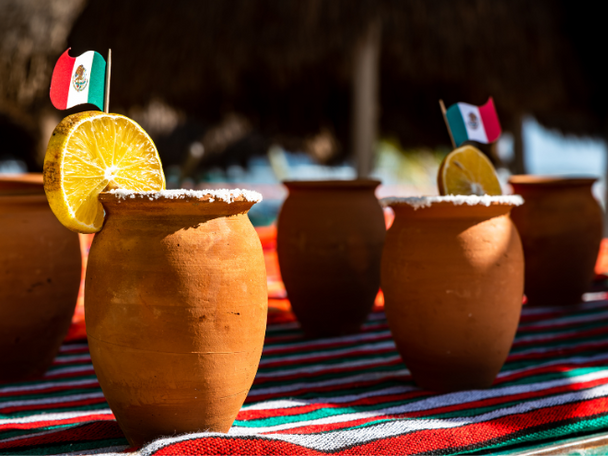
Mezcal is traditionally served neat in a clay copita, which allows for the rich aromas to be fully enjoyed. Some may also choose to add a splash of water or ice to dilute the intense smokiness. Mezcal is often savored slowly, as each sip takes the drinker on a journey through its distinct flavors.
Enjoying American Agave Spirits

The best way to enjoy American agave spirits is subjective, as each unique spirit may call for a different serving method. Some may be best enjoyed neat, while others may shine in a cocktail. Experimentation and personal preference are key when enjoying these diverse spirits. Ameragave was crafted to be sipped or masterfully mixed in your favorite top-shelf cocktail. See all of our favorite recipes.
Wrapping Up: Tequila, Mezcal or American Agave Spirits?
In the end, it all comes down to personal taste and preference. Whether you prefer the bold, earthy flavors of mezcal or the floral notes of a blanco tequila or smooth, complex flavor of aged tequila, or the new, exciting world of American agave spirits. So go out and explore this exciting category – who knows, you may just find a new favorite.
The Essence of Each Spirit
While tequila, mezcal and American agave spirits all come from the same plant, each one has its own unique essence. Tequila is often characterized by its smooth, sweet notes while mezcal boasts a distinct smokiness. American agave spirits can vary greatly in taste depending on their aging process and other factors, offering a diverse range of flavors to explore.
Making the Choice: What's Your Flavor?
When it comes to choosing between tequila, mezcal, American agave spirits, or others, the best approach is to try them all and discover which one speaks to your taste buds. With so many varieties and serving options, there's no limit to how you can enjoy these delicious and versatile spirits. So go ahead, grab a bottle and raise a glass to the rich culture and heritage of agave spirits. Cheers!
FAQ
What's the difference between tequila and mezcal?
+
The main difference lies in their production and flavor profiles. Tequila is typically smoother and sweeter, produced exclusively from blue agave in specific regions of Mexico. Mezcal, known for its smoky flavor, can be made from over 30 types of agave and isn't as limited in region.
Can American agave spirits stand up to the classic tequila and mezcal?
+
Absolutely! American agave spirits bring their own unique flair to the table, offering a diverse range of flavors influenced by local distillation techniques and aging processes. They're a bold, new world to explore for any agave spirit aficionado.
How should I enjoy these spirits?
+
There's no one-way! Whether sipped neat to appreciate their complex flavors, or mixed into a refreshing cocktail, each spirit offers a unique experience. Experimentation is key, so feel free to explore and find what suits your palate best. View our Cocktails page for inspiration.
How do I start exploring these agave spirits?
+
Start by sampling them neat to understand their basic flavor profiles. Then, try them in a variety of cocktails to see how their flavors blend with other ingredients. Visit local bars that specialize in agave spirits or attend tastings to broaden your exposure.
Subscribe to our Newsletter
Invisible placeholder to eliminate layout shift


